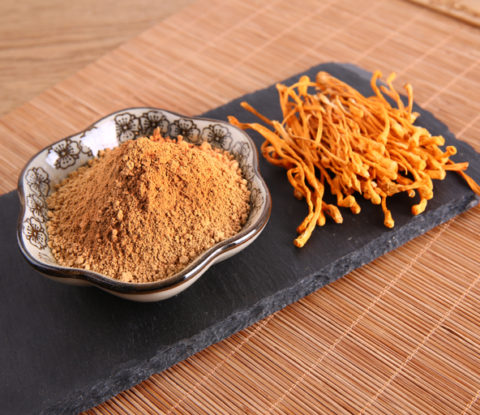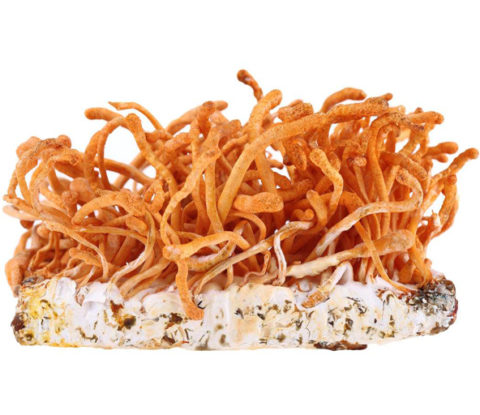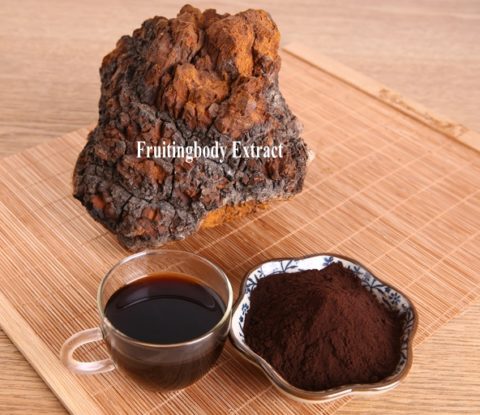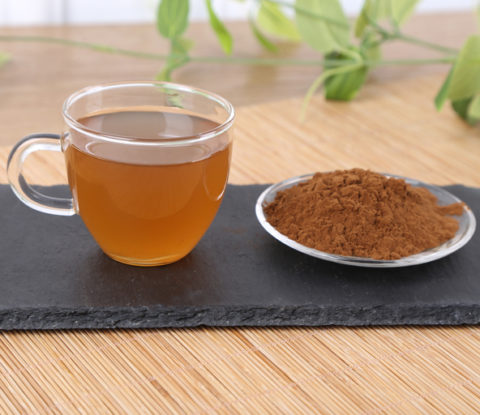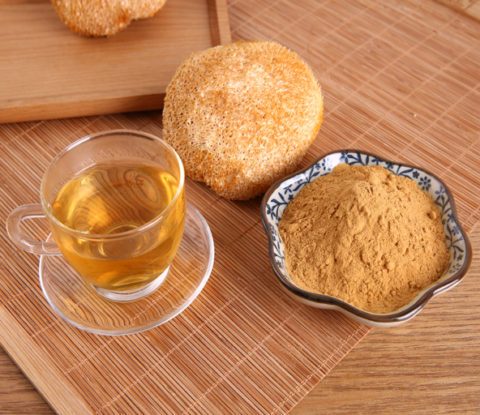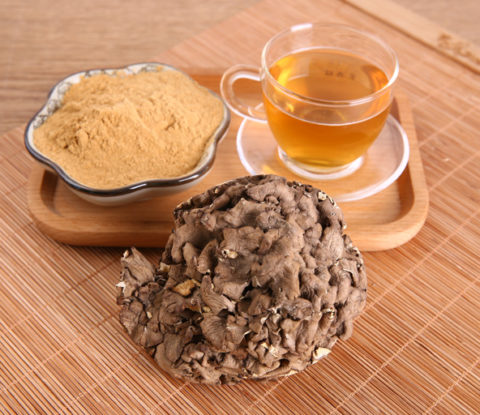
Cordyceps Sinensis Mycelium Extract Powder,Cordyceps Militaris Fruitingbody Dual Extract; Polysaccharides 10%, 20%, 30%,50% UV
Cordycpes Sinensis is trationally used for the treatment of kidney weakness presenting with lumbar and knee soreness, impotence and spermatic emission, and it can be used alone and prepared as a medicinal wine, or combined with herbs like epimedium, morinda root or dodder seed.
Cordyceps Extract Power
【Latin Name】: Cordyceps sinensis (Berk.) Sacc/Cordyceps militaris
【Part Used】:Cordyceps sinensis (Berk.) Sacc(mycelium)/Cordyceps militaris(fruitingbody)
【Extraction Method】: Water/ Grain Alcohol
【Active Ingredient】: Polysaccharides
【Specification】: 10:1, 20:1, 10%, 20%, 30%,50%
【Testing Method】: TLC/UV
【Appearance】: Brownish yellow fine powder
【Packing】: 1kg,2kg,5kg/bag (packed in an aluminum foil bag outside; double-layer PE inside); 25kg/fiber drum.
【Physicochemical index】:
Heavy Metal <10ppm(As <1ppm, Pb <2ppm, Hg <0.2ppm);
Pesticides Residues <1ppm;
Total Plate Count <1000cfu/g (Yeast & Mould <100cfu/g, Salmonella: Negative, E.Coli: Negative).
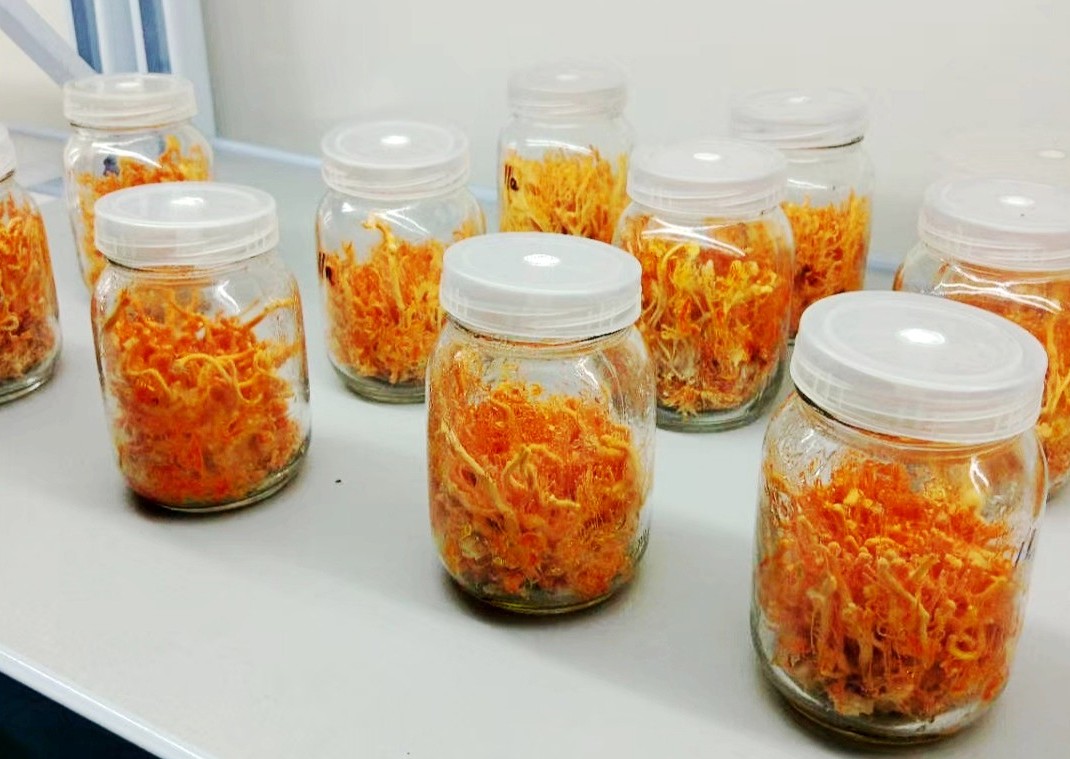
Cordyceps Sinensis Extract is a product of active substances isolated and purified from cultivated cordyceps sinensis mycelium. Cordyceps sinensis is a new generation of mushroom being used by the pharmaceutical industry and also as a dietary supplement amongst more informed consumers seeking alternatives to the more conventional treatments for cancer and AIDS as well as a wide range of other health and immune system issues. Cordyceps is considered a “food” by the US Food and D-rug Administration (FDA) and is classified as “generally recognized as safe” (GRAS). A growing number of researchers now consider it to be a “superfood” that can be included in almost every diet. So why are these rediscovered mushrooms now regarded as superfoods? These medicinal mushrooms are extremely high in both beta-glucans, which have been shown to be useful in cancer therapies, and polysaccharides. Polysaccharides are long sugar chains with many oxygen sections within them. As these sugars are broken down by the body, the oxygen molecules are released and absorbed on a cellular level. We know that all forms of cancer cannot exist in an oxygen-rich environment and that without proper oxygen levels the body is left to fall into degenerative states that encourage cance-r, heart disease, immune disorders and diabetes, and also allow many viral diseases such as hepatitis C, Lyme’s disease and many others to flourish.
The key is how to deliver oxygen to the body on a cellular level. This host of pharmaceutical mushrooms includes such well-known products as Reishi, Maitake and Agaricus which are rich in beta-glucans, known sources for oxygen. This list continues to grow, with clinical studies now including more than 70 different mushroom species. The most interesting one to emerge is Cordyceps sinensis, which grows at about 16,000 feet (4,877 metres) in Tibet.
Cordyceps sinensis increases ATP (adenosine triphosphate) levels in the body by almost 28 per cent. ATP is the body’s energy supply source—the body’s battery, so to speak—and is required for all enzyme processes. It is also now believed that ATP is where cold-fusion (“Brown’s gas”) processes occur in the body on a molecular level. Although the concept of molecular-level cold fusion is not the subject of this article, I believe this is the root of biological energy exchanges, which will be explored in future writings. The impact on the energy state alone would make this mushroom a true superfood, but there is much more to be shared.
Composition Analysis of Cordyceps Mushroom
Cordycepin [3′-deoxyadenosine] and cordycepic acid [d-mannitol] were the initial bioactive compounds fi rst isolated from C. militaris. Chen and Chu14 announced the characterization of cordycepin (3′-deoxyadenosine ) and 2′-deoxyadenosine using nuclear magnetic resonance (NMR) and infrared spectroscopy (IR) in an extract of Cordyceps sinensis. Other components found included various saccharides and polysaccharides, including cyclofurans, which are cyclic rings of five-carbon sugars, whose function is yet unknown; beta-glucans; beta-mannans; cross-linked beta-mannan polymers; and complex polysaccharides consisting of both 5 and 6 carbon sugars joined together in branching chains,employing both alpha- and beta-bonds. These are true hetero polysaccharides. In addition, many nucleosides have been found in Cordyceps, including uridine, several distinct structures of deoxyuridines, adenosine, 2′3′-dideoxyadenosine, hydroxyethyladenosine, cordycepin [3′-deoxyadenosine], cordycepin triphosphate, guanidine, deoxyguanidine, and other altered and deoxygenated nucleosides, found no where else in nature. Of particular note are various immunosuppressive compounds found in Cordyceps, including cyclosporin, a derivative of the species Cordyceps subsessilis [anamorph: Tolypocladium infalatum]. Other immunosuppressant compounds have also been found in Isaria sinclairii, a species closely related to Cordyceps.
There are two general categories of bio-active compounds found in pharmaceutical mushrooms:
1). The polysaccharides, which comprise most of the medicinal compounds, are soluble in hot water and not in alcohol. The immuno-stimulant type of action so well known in mushrooms is from this class of compounds. If you are looking for immune modulation action, then don’t use alcohol extracts as they will not be effective.
2). The nucleosides, another class of compounds, are soluble in non-polar solvents like alcohol and hexane. These compounds are usually smaller in molecular size and are more specific in their bio-activity compared with polysaccharides. Nucleosides, deoxynucleosides and most of our antibiotics and antimicrobials fall into this category.
Indications of Cordycpes in Trational Chinese Medicine
1. Chronic cough, dyspnea of deficiency type, phlegmatic blood cough of deficiency type due to lung deficiency or both deficiency of lung and kidney
It is a good herb for even reinforcement of lung and kidney because it can tonify kidney yang, nourish kidney essence, and tonify lung qi. It also can stop bleeding, resolve phlegm, and relieve cough and dyspnea. It has the effect of both treating branch and root of cough and dyspnea of deficiency type. Because of its hemostatic action, it is very indicated for phlegmatic blood cough of deficiency type, it is combined with herbs of nourishing yin, clearing lung, resolving phlegm and relieving cough, for instance, it is used with Bei Sha Shen, Nan Sha Shen, Chuan Bei Mu and Mai Dong. For phlegmatic blood cough of both qi and yin deficiency type, it is combined with herbs of tonifying qi, nourishing yin, clearing lung, resolving phlegm, relieving cough and hemorrhea, for instance, it is used with Xi Yang Shen, Bei Sha Shen, Chuan Bei Mu and E Jiao. For phlegmatic blood cough of both lung and kidney deficiency type, it is combined with herbs to tonify lung and kidney to receive qi, resolve phlegm and relieve cough and dyspnea, for instance, it is used with Ge Jie , Shan Yao and Chuan Bei Mu.
2. Impotence and premature ejaculation with thin semen due to kidney deficiency
It is indicated for impotence and premature ejaculation with thin semen due to deficiency of kidney yang and insufficiency of kidney essence, because it can treat impotence through tonifying kidney and nourishing essence. It could be used as alcoholic preparation singly or combined with kidney-yang-tonifying and essence-nourishing herbs, for instance, it is used with Tu Si Zi, Ba Ji Tian and Yin Yang Huo. Besides, it is suitable for weakness due to chronic diseases, suspectible to external contraction it could be stewed with duck, chicken or pork, because it can tonify kidney, secure essence, tonify lung and protect defensive system, and improve the recovery of organism.
Modern Researches on Cordyceps Benefits
1. Fatigue
Inhabitants in the high mountains of Tibet and Nepal consume Cordyceps, claiming that it gives them energy and offsets the symptoms of altitude sickness. The proposed reason for the alleged increase in energy is an increase in cellular ATP, as previously mentioned; likewise, increased oxygen availability has been posited as the primary agent in combating the effects of altitude sickness. In a placebo-controlled clinical study of elderly patients with chronic fatigue, results indicated that most of the subjects treated with C. sinensis reported a significant clinical improvement in the areas of fatigue, cold intolerance, dizziness, frequent nocturia, tinnitus, hypos-sexuality, and amnesia, whereas no improvement was reported in the placebo group. Another study involving healthy elderly volunteers, with an average age of 65, tested the output performance and oxygen capacity of subjects while exercising on stationary bicycles. A portion of the volunteers consumed C. sinensis for 6 weeks, whereas others consumed a placebo.
The results demonstrated that the cordyceps group had a significant increase in energy output and oxygen capacity over the placebo group after 6 weeks. Among the simplest and most reliable tests used to determine a compound’s ability to increase the energy output of a subject or decrease fatigue is the mouse swim test. In this test, two groups of mice (or other animals) are used. One group receives a standard diet, whereas the other receives the same diet, with the addition of the test compound. In this case, the test compound is Cordyceps. After a period of time, the two groups are put into a steep-sided container fi lled with water, from which escape is not possible. In this way, the animals are forced to swim. The time-to-exhaustion is measured for the two groups, and the results are compared and contrasted. If the group receiving the test compound swims longer than the group on the standard diet without the test compound, then it has been determined that they had increased energy output/decreased fatigue, when compared to the control group. Trials of this nature have been conducted using cordyceps as the test compound and have invariably shown the use of cordyceps to significantly increase the time-to-exhaustion in laboratory animals over their control groups.
2. Immunomodulating Effects
The immune-enhancing effects of cordyceps sinensis extract have been alluded to in the above discussions. It is of interest to note that the fungus that produces the immunosuppressive d-rug cyclosporin, Tolypocladium infl atum, was discovered in 1996 to be the a s-exual stage of yet another Cordyceps species, C. subsessilus. Thus, the same genus of fungus that was used for centuries to provide immune stimulation was now known to provide an immune suppressant that is valuable in organ transplantation surgery.
Other such experiments demonstrating both inhibiting as well as potentiating effects of Cordyceps are controversial, and the effects observed are possibly the result of differing experimental conditions and variables. However, with such evidence of a possibly bi-directional immune-modulating effect, further research is in order. Although the d-rug cyclosporin has enabled some advances in medicine by facilitating the transplant of organs, there has been a drawback to its use. The high toxicity of cyclosporin has caused many patients to suffer from serious kidney damage related to the use of the d-rug. In 1995, a study was undertaken in China in which 69 kidney transplant patients were given either cyclosporin alone or in conjunction with C. sinensis, at 3 grams per day. After 15 days it was clearly evident that the group receiving C. sinensis in addition to cyclosporin had a much lower incidence of kidney damage than the group receiving only cyclosporin, as measured by the levels of urinary NAG, serum creatinine, and blood urea nitrate.
3). Kidney Ailments
Traditional views of the Cordyceps species held that its consumption strengthened the kidneys. Studies have shown that much of the kidney-enhancing potential of Cordyceps stems from its ability to increase 17-hydroxy-corticosteroid and 17- ketosteroid levels in the body. Chronic renal failure is a serious disease, one often affecting the elderly. In a study among 51 patients suffering from chronic renal failure, it was found that the administration of 3–5 grams per day of C. sinensis significantly improved both kidney function and overall immune function of treated patients, compared to the untreated control group.40 Patients with chronic renal failure or reduced kidney function often suffer from hypertension, proteinuria, and anemia.
In a study with such patients, it was found that after one month on C. sinensis, a 15% reduction in blood pressure was observed. Urinary protein was also reduced. Additionally, increases in superoxide dismutase (SOD) were seen. The increase in SOD, coupled with an observed decrease in serum lipoperoxide, suggests an increase in the oxygen-free radicalscavenging capacity, resulting in reduced oxidative cellular damage. In another human clinical study, 57 patients with gentamicin-induced kidney damage were either treated with 4.5 grams of Cordyceps per day or by other more conventional methods. After 6 days, the group that received Cordyceps had recovered 89% of their normal kidney function, whereas the control group had recovered only 45% of normal kidney function. The time-to-recovery was also significantly shorter in the Cordyceps group when compared to the control group.
4). Hypoglycemic Effect
Another area of particular interest is the effect of Cordyceps spp. on the blood glucose metabolism system. Cordycepssinensis has been tested in animal and human trials to investigate its potential as an agent in blood sugar regulation. In one randomized trial, 95% of patients treated with 3 grams per day of C. sinensis saw improvement in their blood sugar profi les, whereas the control group showed only a 54% improvement with treatment by other methods. In animal studies, isolated cordyceps sinensis extract polysaccharides have been shown to improve blood glucose metabolism and increase insulin sensitivity in normal animals, to lower blood sugar levels in genetically diabetic animals, and to positively effect blood sugar metabolism in animals with chemically induced diabetes.
The common thread throughout all these trials is the increase in insulin sensitivity and hepatic glucose-regulating enzymes, glucokinase, and hexokinase. In one unpublished trial conducted by this author on nondiabetic patients treated with 3 grams per day of Cordyceps, it was found that blood sugar levels vary throughout the day; the increase in blood glucose levels after eating and the dropping of glucose levels between meals was significantly dampened in the Cordyceps group. This indicates an increase in the efficiency of the blood sugar regulation mechanism. Furthermore, it was found that the subjects who happened to be alcoholic tended to lose their desire for alcohol within 48 hours after the commencement of this study. Subsequent unpublished and ongoing studies by this author have confirmed this alcohol craving reduction effect. Further research into this area is clearly indicated.
5. Heart Ailments
Cordyceps sinensis extract is also a medication used in stabilizing the heartbeat and correcting heart arrhythmias in China. Although the exact mechanism responsible for the reputation of Cordyceps with regard to controlling arrhythmias is not completely understood, it is thought to be at least partially due to the presence of adenosine,54 of which Cordyceps often has a significant quantity, along with deoxyadenosine, related adenosine-type nucleotides, and other free nucleosides. It has been shown that these compounds have an effect on coronary and cerebral circulation. Although no single d-rug or herb is equally effective in all patients, it appears rare for a patient’s arrhythmia to remain unaffected by the addition of Cordyceps to the treatment regimen. Cordyceps has been used traditionally to treat patients with heart disease and those recovering from stroke.
In studies of patients suffering from chronic heart failure, the long-term administration of Cordyceps, in conjunction with conventional treatments—that is, digoxin, hydrochlorothiaside, dopamine, and dobutamine, promoted an increase in the overall quality of life. This included general physical condition, mental health, s-exual drive, and cardiac function, compared to the control group.
6. Liver Ailments
Another area of considerable research interest is the relationship between Cordyceps and liver function. Cordyceps has been shown in nearly all such studies to increase the effi cient functioning of the liver. For example, in the Orient today, Cordyceps is commonly used as an adjunct in the treatment of chronic hepatitis B and C. In one study, cordyceps sinensis extract was used in combination with several other medicinal mushroom extracts as anadjunct to lamivudine, for the treatment of hepatitis B. Lamivudine is a common antiviral d-rug used in the treatment of hepatitis. In this study, the group receiving Cordyceps along with other medicinal mushroom extracts had much better results, in a shorter period of time than the control group, who received only lamivudine. In another study using 22 patients who were diagnosed with posthepatic cirrhosis,57 after 3 months of consuming 6–9 grams of Cordyceps per day, each patient showed improvements in liverfunction tests.
7. Treatment for Sexual Dysfunction
Three separate Chinese double-blind, placebo controlled studies with over 200 men with “reduced libido and other sexual problems” showed remarkably similar results. On average, 64 per cent of the Cordyceps-users reported significant improvement at the conclusion of the experimental period compared with 24 per cent of the placebo group. In another double-blind, placebo-controlled study conducted with 21 elderly women with similar complaints, 90 per cent reported improvements of their condition following the use of Cordyceps, compared with none in the control group.
Cordyceps sinensis extract has been shown to improve libido and quality of life in men and women, fight infertility and increase sperm count and survival. Clinical studies involving 189 male and female patients with decreased libido and desire showed improvement of symptoms in 66 per cent of cases. A double-blind study conducted by the Institute of Materia Medicain Beijing showed an 86 per cent improvement in female libido and desire. The most dramatic physical proof came from a fertility study involving 22 males which showed that, after eight weeks of taking a Cordyceps supplement, their sperm count increased by 33 per cent, their incidence of sperm malformations decreased by 29 per cent and their sperm survival rate increased by 79 per cent.
